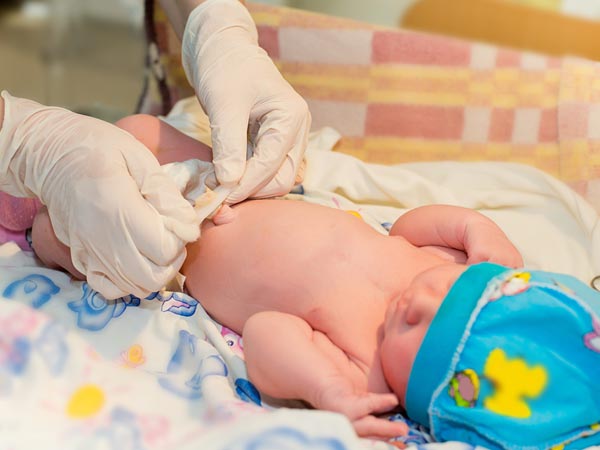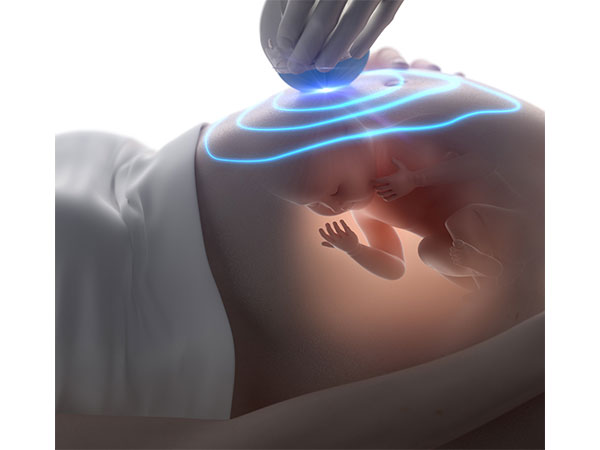Just In
- 1 hr ago

- 2 hrs ago

- 5 hrs ago

- 6 hrs ago

Don't Miss
- News
 CSK vs LSG Dream11 Prediction, IPL 2024: Know Fantasy Points, Team List For Chennai vs Lucknow Match
CSK vs LSG Dream11 Prediction, IPL 2024: Know Fantasy Points, Team List For Chennai vs Lucknow Match - Finance
 Air India Joins Into Codeshare Pact With Japan's All Nippon Airways
Air India Joins Into Codeshare Pact With Japan's All Nippon Airways - Movies
 Shah Rukh Khan Applauds Mohanlal's Performance Of Viral Song From Jawan, Calls Him 'OG Zinda Banda'
Shah Rukh Khan Applauds Mohanlal's Performance Of Viral Song From Jawan, Calls Him 'OG Zinda Banda' - Technology
 Samsung’s Upcoming Galaxy Z Fold 6 & Z Flip 6 To Reportedly Get New Colors
Samsung’s Upcoming Galaxy Z Fold 6 & Z Flip 6 To Reportedly Get New Colors - Sports
 IPL 2024: 'To Save Extra Rs 4 Crore For Auction' - Hesson Reveals Why RCB Did Not Retain Yuzvendra Chahal
IPL 2024: 'To Save Extra Rs 4 Crore For Auction' - Hesson Reveals Why RCB Did Not Retain Yuzvendra Chahal - Automobiles
 Log9 Unveils Amphion & Nexmile – Revolutionizing EV Asset Management
Log9 Unveils Amphion & Nexmile – Revolutionizing EV Asset Management - Education
 Students of the Canadian International School in Bangalore Raise Nearly 60 Lakh Rupees for Bangalore NGOs
Students of the Canadian International School in Bangalore Raise Nearly 60 Lakh Rupees for Bangalore NGOs - Travel
Kurnool's Hidden Gems: A Guide To Exploring India's Lesser-Known Treasures
What Causes Symbrachydactyly? How Is It Treated?
Have you come across kids or babies with missing or short fingers/ toes or even webbed feet and fingers? Well, this condition is called symbrachydactyly. It is a congenital condition, which happens when the baby is inside the mother's womb. Contrary to popular belief, symbrachydactyly is not genetic. Let us find out more about this condition.
What Is Symbrachydactyly?
Symbrachydactyly is a condition which affects the hands or feet of the baby, often resulting in missing fingers/toes or clubbed fingers/toes. It is a congenital abnormality, meaning it takes place when the baby is inside the womb.

The normal human hands consist of five fingers in each hand and five toes on each foot. Any missing digit is often the case of symbrachydactyly. There are three important stages of the condition resulting from mild to severe symbrachydactyly.
The first condition is where the thumb is normal but the fingers are short. In the second condition, the thumb and the little finger seem to be normal but the other digits are either webbed or missing.

The third condition is known to be severe where all the digits including the thumb are missing and there is only a small mass of tissue in their places. However, symbrachydactyly is widely known to affect only one hand or foot.

What Causes Symbrachydactyly? Is it Genetic?
There is a lot of ongoing research to find the exact cause of symbrachydactyly, but the exact cause is still a mystery. However, the one thing researchers all around the world can vouch for is the fact that it is not genetic. Therefore, if you were affected with symbrachydactyly as a child, there are absolutely no chances of your baby carrying it from you.
There is, however, a possible explanation to symbrachydactyly. The arms of the foetus begin to form in the 4th-6th week of pregnancy. During this time, there may be interruptions in the blood supply to the developing parts, which may stunt their growth. This results in abnormal/missing digits, also called symbrachydactyly.
During the initial stages of formation of the foetus's fingers and feet, the palms have buds, which eventually grow into fingers. But for this to happen, the growth of tissues is important. Sometimes, the tissues do not fully grow due to various reasons. This is another widely accepted reason for symbrachydactyly.
Is Symbrachydactyly A Disability?
Though, each and every part of the body is designed in a flawless way and has a specific function, the absence of some parts does not account for any kind of disability. Symbrachydactyly too is a condition which cannot be defined as a disability due to the following reasons.
-
Symbrachydactyly
usually
affects
only
one
hand/foot,
while
the
other
hand/foot
is
completely
normal.
Also,
most
of
the
children
having
the
condition
have
a
well-formed
thumb.
The
hands
still
do
not
lose
their
functions
and
the
affected
people
are
known
to
carry
out
their
lives
normally.
-
Symbrachydactyly
can
easily
be
corrected
through
surgery.
If
not,
the
use
of
prosthetic
also
makes
them
live
a
normal
life.
-
For
kids
having
a
difficult
time
living
with
the
condition,
occupational
therapy
is
known
to
be
quite
helpful
as
well.
Is Symbrachydactyly A Common Condition?
Symbrachydactyly isn't a majorly severe condition. It is known to affect 1 in approximately 32,000 births.

What Are The Treatment Options Available?
As symbrachydactyly is not a life-threatening disease, it can easily be corrected through surgery or reconstruction. Though, the nature of the surgery depends on the severity of the condition.
Mild forms of symbrachydactyly, where there are one/two missing digits, minor correction to the soft skin tissue is enough to treat the condition. More severe cases of symbrachydactyly may require the transfer of bone tissues from the toes in order to re-construct the digits.
There are known cases of toes being re-constructed onto the hand in order to make the hand usable. As for webbed hands and toes, the doctors will first have to determine the condition of the bones. A surgery will later be used to separate the digits.
In this modern world, prosthetics breathe a new hope of life in people suffering from abnormalities. Anybody who is worried about the aesthetic aspects of their hands affected by symbrachydactyly can safely use prosthetics to replace the missing digits and give the hand a normal appearance.
Symbrachydactyly is usually diagnosed easily during the ultrasound scans. It is not a life-threatening condition and will cause absolutely no harm to the baby and the mother.
Most Read : 12 Foods To Reduce Body Heat
If your child is born with symbrachydactyly, you can take the advice of the doctor, who will prescribe the best way to treat the condition. Chances are if the condition is not severe, there is nothing that you will have to do, except to teach the baby to be comfortable in its own skin.
Also, symbrachydactyly is not caused due to anything that you did during your pregnancy, it is just an abnormality caused due to the decreased blood flow and there was very little that you could do about it. Taking the right approach will go a long way in ensuring the life-long wellness of your baby.
-
 pregnancy parentingDelhi Air Quality Crisis: How Air Pollution Can Affect Unborn And Newborn Babies? Precaution Tips For Pregnant
pregnancy parentingDelhi Air Quality Crisis: How Air Pollution Can Affect Unborn And Newborn Babies? Precaution Tips For Pregnant -
 prenatalMissed Abortion (Missed Miscarriage): Causes, Symptoms, Complications And Treatments
prenatalMissed Abortion (Missed Miscarriage): Causes, Symptoms, Complications And Treatments -
 basicsHarmful Effects Of Plastic Containers And Heat-Inducing Foods During Pregnancy
basicsHarmful Effects Of Plastic Containers And Heat-Inducing Foods During Pregnancy -
 prenatalTop 5 Things To Avoid Consuming When You Are Pregnant
prenatalTop 5 Things To Avoid Consuming When You Are Pregnant -
 prenatalAir Pollution Can Increase The Risk Of Miscarriage, Studies Suggest
prenatalAir Pollution Can Increase The Risk Of Miscarriage, Studies Suggest -
 prenatalFoetal Lower Urinary Tract Obstruction (LUTO) - Causes, Diagnosis And Treatment
prenatalFoetal Lower Urinary Tract Obstruction (LUTO) - Causes, Diagnosis And Treatment -
 basicsWhat Is HELLP Syndrome? What Are Its Symptoms?
basicsWhat Is HELLP Syndrome? What Are Its Symptoms? -
 prenatalWhat Is Foetal Pleural Effusion And What Causes It?
prenatalWhat Is Foetal Pleural Effusion And What Causes It? -
 babyCan Noise Affect The Foetus Or The Newborn?
babyCan Noise Affect The Foetus Or The Newborn? -
 prenatalWhat Can Amniocentesis Tell You About Your Unborn Baby?
prenatalWhat Can Amniocentesis Tell You About Your Unborn Baby? -
 prenatalFacts About Intrauterine Growth Restriction (Slow Foetal Growth)
prenatalFacts About Intrauterine Growth Restriction (Slow Foetal Growth) -
 basicsHow To Make Your Cervical Mucus More Fertile
basicsHow To Make Your Cervical Mucus More Fertile


 Click it and Unblock the Notifications
Click it and Unblock the Notifications



